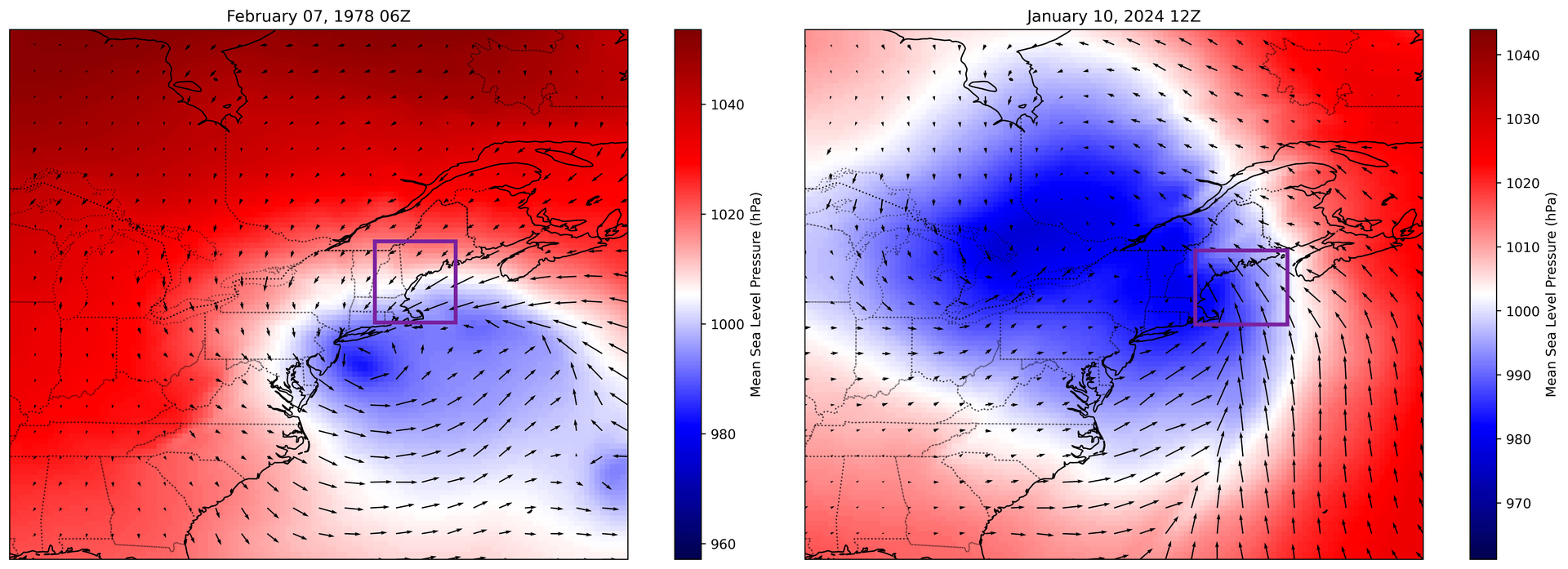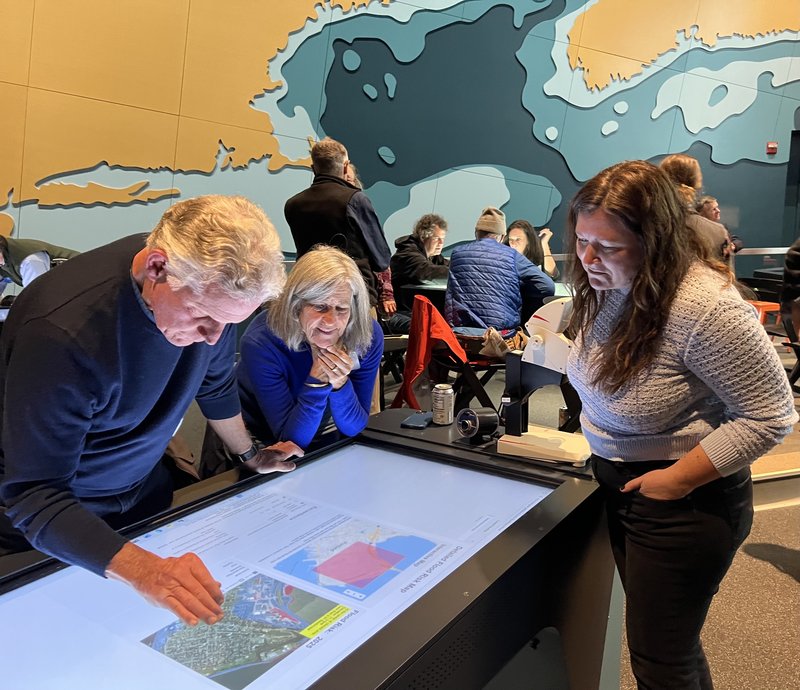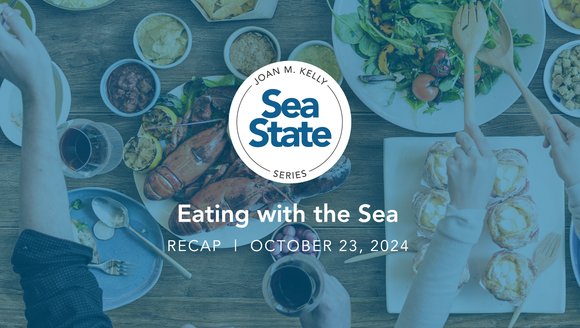Sea State Recap: Building Climate Ready Communities
Perspectives | Oct 29, 2025
In this installment of the Sea State series at the Gulf of Maine Research Institute (GMRI), we hosted a timely conversation around supporting Maine communities in adapting to climate change, now and in the future.
We kicked off our annual Sea State Seminar Series last week under the theme Imagining 2030, where we explore topics such as adapting fisheries and seafood systems to thrive in a changing climate, building climate-ready communities along our coast, developing the blue economy and strengthening working waterfronts to support coastal livelihoods, and advancing innovative energy solutions to power the Gulf of Maine region forward. At the heart of this vision is a commitment to supporting resilient coastal communities in the face of accelerating climate change. In our October seminar, three speakers — Director of the new Maine State Resilience Office Brian Ambrette, GMRI Coastal Scientist Dr. Hannah Baranes, and GMRI Director of Community Climate Action Gayle Bowness — shared the science, stories, and strategies shaping how Maine prepares for sea level rise and coastal flooding.
A Community-Driven Statewide Strategy
To begin the evening, Brian Ambrette introduced the Maine Office of Community Affairs (MOCA), a new state initiative designed to help communities more easily access information, resources, and technical support. The office consolidates multiple programs under one umbrella, including the Community Resilience Partnership Grant Program, the Municipal Planning Assistance Program, and the Floodplain Management Program, with the goal of providing a "one-stop shop" for communities facing challenges like climate adaptation, affordable housing needs, and land use pressures.
The State Resilience Office, which Ambrette directs, and is part of MOCA, aims to support communities by offering grants, technical assistance, and a coordinated approach to addressing climate-related challenges. A key focus is making state government more accessible, with plans to launch a human phone system, create a comprehensive grant research tool, and help communities find funding opportunities more efficiently. The initiative represents a strategic effort to help Maine's communities, especially smaller ones, build resilience and tackle complex local issues. His team will work across agencies to support municipalities dealing with interrelated challenges like coastal resilience, municipal planning, housing, and more.
"The same communities dealing with climate stressors are also dealing with housing insecurity, aging infrastructure, and limited planning capacity," Ambrette said. "They don’t need another plan on the shelf. They need the support and tools to make change real."
He emphasized that effective resilience efforts must be deeply local: built from community needs and implemented by community leaders. “We’re building the partnerships to connect communities with state resources, data, and each other,” he said. “Because we’ve heard from local leaders that what they want is collaboration, not top-down solutions.”
Scientific Insights into Coastal Flooding
GMRI Research Scientist Dr. Hannah Baranes followed Ambrette by providing a close look at the string of damaging coastal storms in Maine from late 2023 and early 2024, offering new insight into why their impacts were so severe. She explained that both the December 2023 and January 2024 events were extra-tropical cyclones — powerful low-pressure systems — but what made them especially destructive was their track.
"We often call extratropical cyclones ‘Nor’easters’ in the Gulf of Maine region because they track seaward of the coast, bringing strong winds out of the northeast," explained Dr. Baranes. "These three storms all followed more inland tracks, drawing warm, wet air up from low latitudes and driving winds out of the southeast."

Maine’s coast is less sheltered to the southeast, so these winds brought large, damaging waves to the coast on top of storm surges that aligned with some of the year’s highest astronomical tides. These were key ingredients in the historic flooding seen across many parts of the state, as communities experienced repeated damage within a short window.
Dr. Baranes then connected the storm impacts to broader trends in sea level rise, showing how even small increases in baseline water levels can make each subsequent event far more destructive. "Just a few inches of sea level rise can turn a once-in-a-decade flood into something that happens every couple of years. And we're already seeing that shift," said Dr. Baranes.
Just a few inches of sea level rise can turn a once-in-a-decade flood into something that happens every couple of years. And we're already seeing that shift.
![Headshot of Hannah Baranes]() Hannah Baranes, Ph.D. Coastal Scientist
Hannah Baranes, Ph.D. Coastal Scientist
Hands-On Exploration: Our New Flood Risk Tool
To help communities prepare for these rising risks, Dr. Baranes introduced a new interactive flood risk tool she is developing in collaboration with Philip Bogden at Northeastern’s Roux Institute. The tool allows users — such as town officials, engineers, and emergency managers — to explore flooding scenarios in their own communities. It provides localized elevation data at 1-meter resolution, along with a time-evolving view of flood risk. For example, a user could select a segment of road and see its elevation, along with the annual frequency of flooding now through 2150 under different future sea level rise scenarios.
During the seminar, attendees engaged directly with this tool using our interactive touch tables.
This interactive session let attendees explore local vulnerabilities and see how science can guide planning decisions. It also underscored the importance of tools that translate complex data into actionable local insight.

Elevating Community Voices in Climate Planning
Gayle Bowness, our Director of Community Climate Action, presented her team’s approach to supporting communities through our Climate Ready Communities Initiative. Her work centers on helping communities identify and understand their unique climate vulnerabilities while developing locally grounded strategies for action that reflect community values. "We're working to support communities in taking ownership of their climate readiness," said Bowness. "That means understanding what’s at risk, what’s most important, and what actions to take next."
Bowness emphasized that this work is rooted in listening: combining scientific data with the lived experience of residents. “We elevate community voices alongside localized data,” she noted, “because no two towns are exactly the same.”
She highlighted her team’s work with several Maine communities — including Tremont, Mount Desert, Southwest Harbor, Phippsburg, and Woolwich — where the team conducts vulnerability assessments, facilitates community engagement, and helps draft actionable climate plans.
“What we’re really doing is creating a process where diverse voices — especially youth and those most at risk — are part of the conversation,” she said. “That leads to solutions that feel real, sustainable, and relevant to those who will be most impacted by climate changes.”
Through workshops, trainings, and planning sessions, Bowness and her team help build local capacity. The goal, she explained, is to ensure that resilience isn’t just something that happens to communities, but something they build themselves — with confidence and clarity.
A Blueprint for Collective Resilience
Throughout the panel, a clear message emerged: Maine communities are not alone in facing the challenges of sea level rise and climate disruption. State agencies, research institutions, and local leaders are actively collaborating to make climate resilience part of the everyday fabric of life. As Ambrette put it: "Resilience is not a one-off. It's something we build into how we govern, how we plan, and how we care for each other."
Resilience is not a one-off. It's something we build into how we govern, how we plan, and how we care for each other.
Brian Ambrette Director![brian ambrette headshot]() Brian Ambrette Director Maine State Resilience Office
Brian Ambrette Director Maine State Resilience Office
From the systems-level work of the Maine State Resilience Office to the grassroots workshops led by GMRI, this seminar made it clear: climate adaptation is happening now — and it’s powered by partnerships, science, and local action.
Stay tuned for more stories from our Imagining 2030 Sea State Seminar Series, highlighting the people and projects shaping a thriving future for the Gulf of Maine region.



